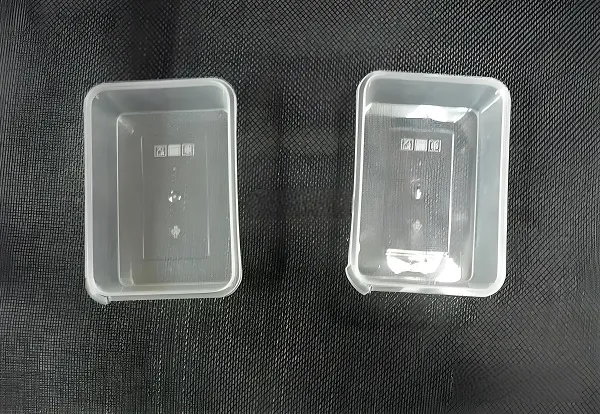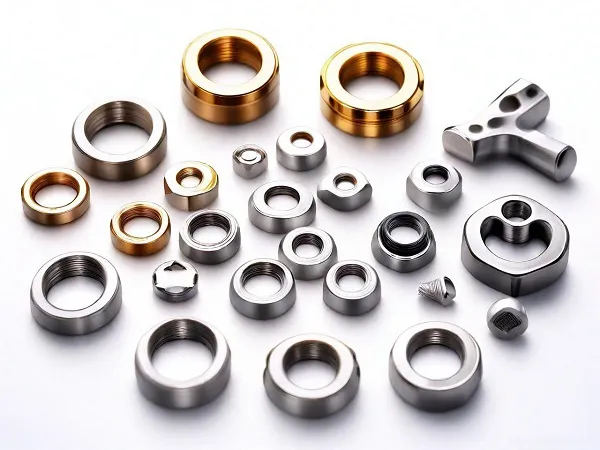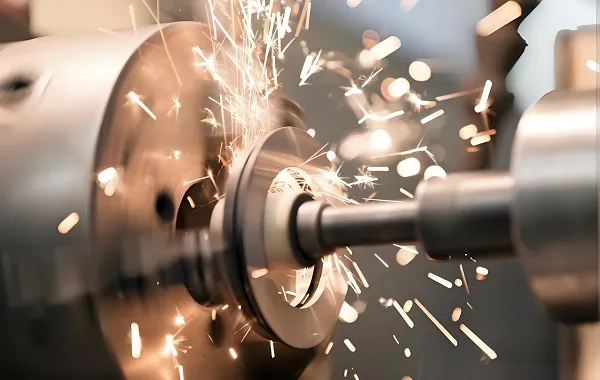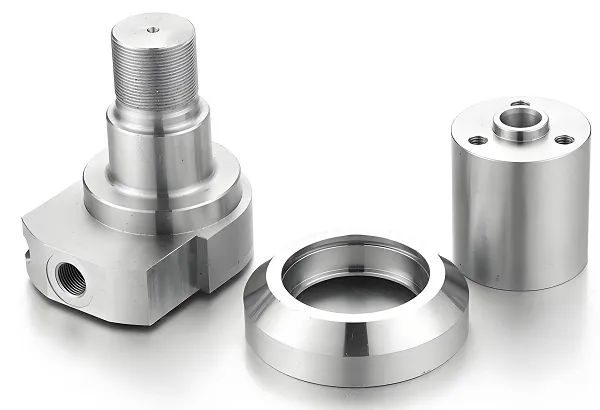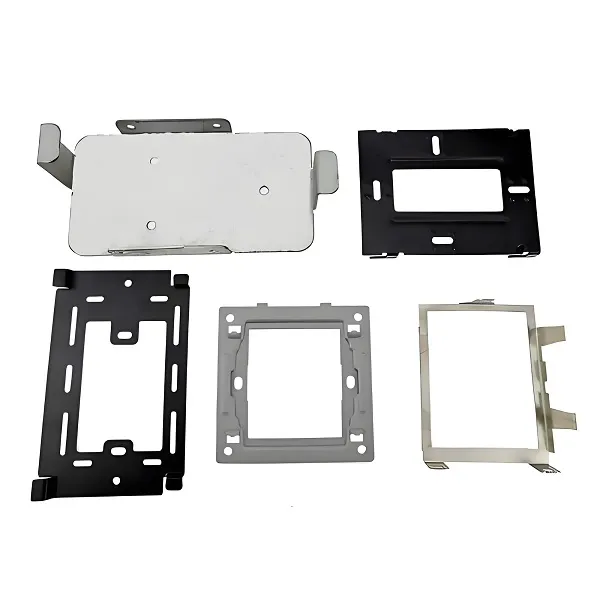In the fields of aerospace, medical devices, and high – end equipment, stainless – steel parts (such as grades 304, 316L, 17 – 4PH, etc.) are the top choice for key structural components due to their excellent corrosion resistance, high strength, and biocompatibility. The stainless – steel CNC turning processing service, through digital process design, specialized equipment technology, and an intelligent production system, controls the dimensional tolerance within ±0.01mm, with a surface roughness of Ra≤1.6μm, and increases the overall efficiency by more than 50%.

I. Bottlenecks of Traditional Turning: Why is Stainless – Steel Processing Significantly Difficult?
Q&A: What are the core difficulties in stainless – steel CNC turning?
The unique properties of stainless – steel materials (such as high hardness of HB 150 – 200, high plasticity, and easy work – hardening) lead to three major pain points in traditional processing:
Severe tool wear: Ordinary carbide tools are prone to sticking to the material during cutting, generating built – up edges. The tool life is only 3 – 5 hours, and frequent tool changes are required, affecting the processing continuity.
Uncontrolled thermal deformation: The concentrated cutting heat (local temperature reaching 800℃) causes the workpiece to expand. Traditional cooling methods are difficult to dissipate heat quickly, and the dimensional error can reach ±0.15mm, which cannot meet the requirements of precise assembly.
Surface quality defects: Stainless steel is highly viscous. Conventional turning is likely to produce scratches, burrs, and vibration marks. The surface roughness Ra value often reaches 6.3μm, and additional polishing is required, increasing the man – hour cost by 20% – 30%.
Breakthrough paths for CNC turning:
Hardware upgrade: Use high – precision CNC lathes (positioning accuracy of ±0.005mm, spindle speed of 8000 – 15000rpm) equipped with a dynamic vibration – damping system to reduce cutting vibration.
Process innovation: Suppress work – hardening and thermal deformation through cutting parameter optimization (such as low feed rate of 0.05 – 0.1mm/r, high cutting speed of 80 – 120m/min) and intelligent cooling.
II. Core Process Innovations: How to Achieve Precision Turning of Stainless Steel?
Breakthroughs in Special – Purpose Tool Technology
Tool material upgrade:
CBN (Cubic Boron Nitride) tools: With a hardness of HV3000, they are suitable for high – hardness stainless steel (such as 17 – 4PH). The cutting speed can be increased to 150m/min, and the tool life can be extended to more than 15 hours.
Coated carbide tools: TiAlN coating (thickness of 2 – 3μm) reduces the friction coefficient, and tool wear is reduced by 40%. They are suitable for conventional stainless steels such as 304/316L.
Geometric structure optimization:
A large rake angle (12° – 15°) design reduces the cutting force, and a helical cutting edge (helix angle of 35° – 40°) improves chip evacuation smoothness and avoids chip entanglement.
Intelligent Cooling and Thermal Management
Cryogenic Minimum Quantity Lubrication (MQL):
Composite cooling with – 20℃ cold air and plant – based cutting fluid (flow rate of 0.1ml/min) reduces the temperature in the cutting area by 30%, increases the tool life by 50%, and reduces the surface residual stress by 60%.
Thermal deformation compensation:
The machine tool is equipped with built – in temperature sensors (accuracy of ±0.5℃) to real – time correct the thermal elongation of the spindle (compensation accuracy of 0.002mm), ensuring stable machining accuracy over a long period.
Digital Turning Processes
CAM programming optimization:
Use software such as MasterCAM to generate spiral feed and layer – by – layer cutting paths, avoiding the impact wear caused by the sudden cutting – in of the tool, and increasing the processing efficiency by 30%.
Real – time processing monitoring:
Force – control sensors (accuracy of ±1N) dynamically monitor the cutting force. An AI algorithm automatically adjusts the feed rate. When the load exceeds the threshold (such as > 500N), the system triggers a speed – reduction protection within 0.1 seconds to prevent tool breakage.
III. Quality Control: Full – Chain Precision Verification from Material to Finished Product
Multi – Dimensional Testing System
Material – level verification:
Spectral analysis ensures that the contents of elements such as Cr and Ni meet ASTM standards (for example, the Ni content of 316L stainless steel is 10.0% – 14.0%, and the impurity S≤0.03%).
The intergranular corrosion test (ASTM A262 E method) verifies the corrosion resistance of the material. The specimen has no cracks after bending after soaking.
Finished – product – level testing:
Dimensional accuracy: A laser interferometer is used to detect the outer diameter / inner diameter tolerance (±0.005mm), and a roundness tester is used to measure the roundness error ≤ 0.003mm.
Surface quality: A roughness tester (resolution of 0.01μm) ensures that Ra≤1.6μm, and a microscope (magnification of 500 times) is used to check for no burrs or cracks.
Functional testing: A hydraulic test bench verifies the pressure – resistance performance of seals (no leakage under 0.8MPa for 30 minutes), and a dynamic balance machine ensures that the unbalance amount of shaft – type parts is < 1g·mm/kg.
Intelligent Defect Prevention
First – piece eight – inspection system: The engineer team cross – verifies 25 indicators such as tool type, cutting parameters, and the dimensions of the first piece, intercepting 99% of the initial process risks.
AI visual full – inspection: A linear – array camera (resolution of 12000dpi) completes surface scanning in 0.3 seconds. A deep – learning algorithm can identify scratches at the 0.05mm level, with a missed – detection rate of < 0.002%.
IV. Balancing Efficiency and Cost: Flexible Production from Small – Batch to Large – Batch
Q&A: Does high – precision turning mean high cost?
Cost reduction and efficiency improvement are achieved through three innovations:
Tool life management:
Deploy a tool wear prediction model. Based on cutting time and load data, the remaining tool life is dynamically calculated (error < 5%), reducing unplanned tool – change time by 30%.
Process integration optimization:
A turning – milling compound machine tool can complete outer – circle, inner – hole, and thread processing in one clamping, reducing 3 clamping errors and increasing the efficiency by 40%.
Digital production scheduling:
The MES system intelligently matches orders with equipment capacity. The switching time for multi – variety small – batch production (50 – 500 pieces) is < 30 minutes, and the equipment utilization rate is increased from 60% to 85%.
V. Core Considerations for Choosing Stainless – Steel CNC Turning Services
Match between equipment and process:
Confirm that the supplier has high – precision CNC lathes (such as Mazak Integrex i – 400AM) and experience in applying CBN tools, and can process parts with a maximum diameter of ≥ 300mm.
Industry certification qualifications:
In the medical field, ISO 13485 certification is required. In the aerospace field, AS9100D is required. For food machinery, FDA or 3A certification is required.
Data transparency capabilities:
Require the provision of processing parameter logs and full – size inspection reports (including CMM data) to support the full – life – cycle traceability of parts.
Conclusion
The stainless – steel CNC turning processing service takes “tool innovation + intelligent cooling + digital control” as its core competitiveness, systematically solving the efficiency and precision bottlenecks of traditional processing. Against the backdrop of increasingly stringent requirements for the reliability of components in high – end manufacturing, turning solutions with “micrometer – level precision, intelligent production, and full – scenario adaptation” are becoming the core support in fields such as aerospace structural components, medical implants, and food – grade pipeline fittings. From single – piece precision processing to large – scale production, the stainless – steel CNC turning service empowers manufacturing with technology, helping enterprises achieve a double leap in efficiency and quality on the precision – processing track.
(Contact us now to get a customized stainless – steel CNC turning solution and free tool – selection service)

